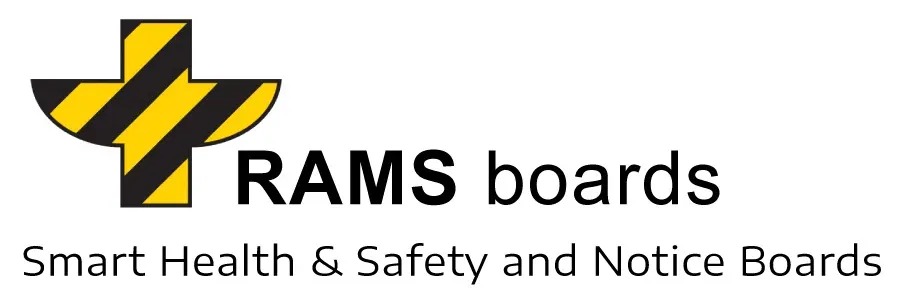The RAMS boards, while offering a multitude of benefits in terms of versatility and adaptability, do come with certain limitations regarding their size and display capacity. These limitations are essential to consider when planning their use in various settings, particularly in ensuring effective communication and space utilization.
Standardized Size: RAMS boards are offered in a single, standard size with a display area measuring 148 cm x 101 cm. This uniform size is designed to balance visibility and clarity, ensuring that crucial safety and health information is communicated effectively without overwhelming the user. However, this standardized sizing means there is a fixed limit to the amount of information that can be displayed at any one time.
Display Capacity Constraints: Given the fixed dimensions of the internal display area (148 cm x 101 cm), there is a finite amount of space available for displaying information. This necessitates careful selection and prioritization of what information is most crucial to be displayed, potentially limiting the amount of detail that can be provided in one view.
Physical Space Requirements: The overall dimensions of the RAMS boards (144 cm × 174 cm × 30 cm) also mean that they require a certain amount of physical space for installation. This might be a consideration in tightly confined areas or in environments where space is at a premium.
Adaptability to Various Environments: While RAMS boards are highly adaptable and can be customized, the fixed size may not always be ideal for every specific site requirement. In some cases, the need for larger or smaller boards might arise, depending on the nature and scale of the information to be displayed.
One Board, One Location: Each RAMS Board can only be placed in one location at a time. In large or complex sites, this may mean requiring multiple boards to cover different areas effectively, as one board cannot be visible or accessible from all parts of a large site.
Balancing Detail with Clarity: The need to keep information clear and easily understandable can sometimes be a limiting factor in how much detail can be placed on a RAMS Board. Overloading the board with too much information might reduce its effectiveness in communicating key messages quickly and clearly.
Static Nature: Unlike digital displays, the information on RAMS boards is static once posted. While this is beneficial for consistent messaging, it does mean that any changes in information require manual updating, which might not be as immediate as with electronic systems.
In summary, while RAMS boards offer significant advantages in terms of durability, eco-friendliness, and effectiveness in communication, their limitations in size and display capacity are important considerations. The standardized size 148 cm x 101 cm, while generally suitable for a wide range of applications, may not meet every specific requirement, and the fixed display capacity requires thoughtful planning in terms of what information is most essential to be communicated.
